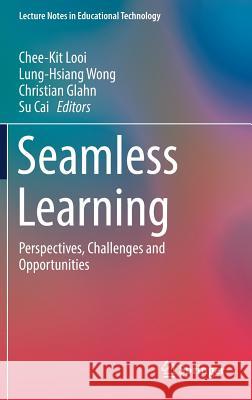Seamless Learning: Perspectives, Challenges and Opportunities » książka
topmenu
Seamless Learning: Perspectives, Challenges and Opportunities
ISBN-13: 9789811330704 / Angielski / Twarda / 2019 / 208 str.
Kategorie:
Kategorie BISAC:
Wydawca:
Springer
Seria wydawnicza:
Język:
Angielski
ISBN-13:
9789811330704
Rok wydania:
2019
Wydanie:
2019
Ilość stron:
208
Waga:
0.49 kg
Wymiary:
23.39 x 15.6 x 1.42
Oprawa:
Twarda
Wolumenów:
01
Dodatkowe informacje:
Wydanie ilustrowane











